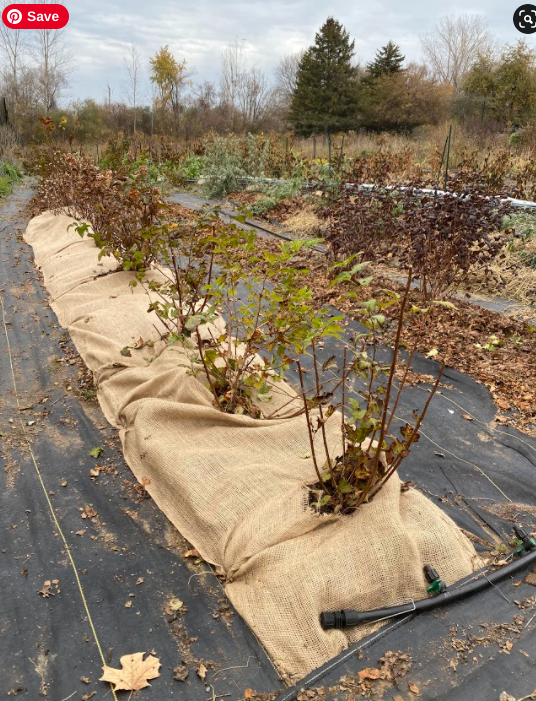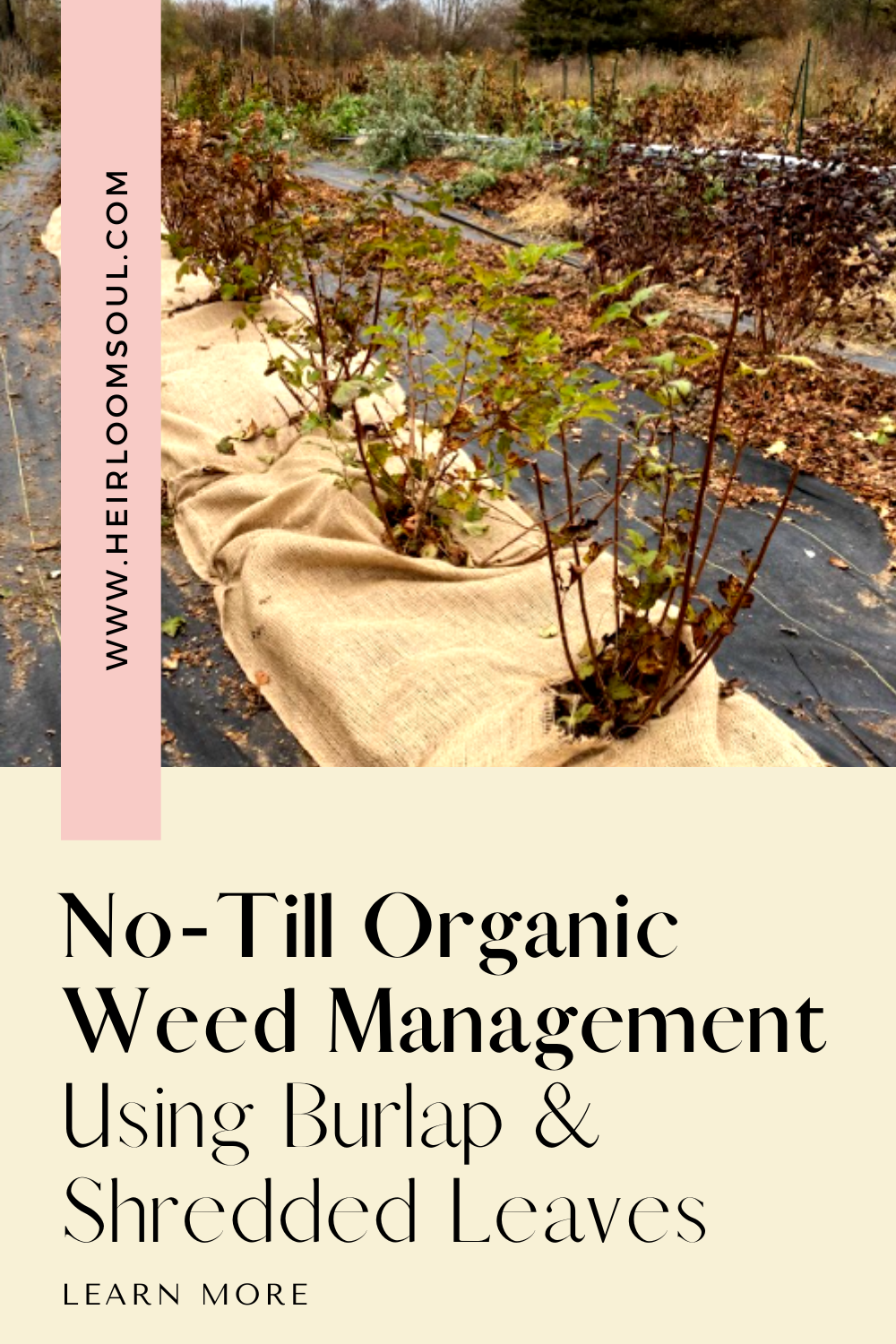Using Burlap & Leaf Mulch as Organic Weed Suppression for Perennial Shrubs
November 10, 2021
The end of 2021 marks my 4th season as a flower farmer in Western New York Zone 6b! How time flies. Of all the goals I’ve set and achieved, and the gorgeous harvests that have come from this patch of paradise, there is one realm of farming that continues to haunt me from day one…
Organic weed control.
Next year, in my fifth growing season, I am dedicating myself to getting the weeds under control. The main reason I need to rid myself of major weeds is the amount of labor it takes to remove them. I am 100% dedicated to growing organically and chemical-free, so the only way to get rid of weeds is to attempt to suppress them — and the ones that get away have to be pulled out, by hand.
I have achieved weed control with varying degrees of success, from impressing even myself with my weed-pulling stamina, to giving up on certain sections of the farm and letting the weeds go to seed. As a result, there are now billions of fertile weed seeds scattered all over my farm. Letting the weeds go to seed, truly, has proven to be the worst farming decision I have ever made. If I could go back in time, I would force myself to pull those weeds until my hands bled. I’d pull them until 4:00 in the morning. I’d pull them until there was nothing left!
So, I’m coming up with solutions for organic weed suppression going forward. Each type of cut flower crop requires different methods of suppression for different reasons. I plan to document these practices (and ideas yet to be practiced) within the next few months.
For now, I will share my NEW method of organic weed suppression for perennial shrubs.
This weed suppression method is incredibly simple. It is, in fact, so simple, that anyone can do it for relatively low cost. It also abides by the regenerative farming principle of The Law of Return, supports healthy soil microbe communities, retains soil moisture, and prevents soil erosion.
Benefits of Using Burlap & Leaf Mulch as Organic Weed Suppression
Using shredded leaves as a thick mulch abides by the regenerative farming principle of The Law of Return. By adding a thick layer of mulched leaves to our farm/garden beds, we add a plethora of beneficial soil microbial life, strengthening our soil health connections. In addition, the organic leaf matter is an incredible food source for earthworms and encourages their presence. Earthworms aerate soil through their movement and enrich it through their excrement. Shredded leaves also retain moisture, preventing the need for additional watering.
Burlap, on its own, will not suppress weeds. Burlap comes into play to prevent the shredded leaves, which actually will do the weed suppressing job, from blowing away. I chose burlap for this task because it is an organic, breathable material that can be composted once it’s broken down after a few seasons. Once this breakdown happens, the shrub bed will be ready for a new layer of shredded leaves and burlap.
We’re using all natural materials here that encourage a healthy Soil Food Web, will keep weeds under control, and moisture in. Win win win!
Organic Weed Suppression for Perennial Shrubs using Burlap & Leaf Mulch
Tools/Ingredients:
Burlap roll (I use 36-48” wide) — Use Google for best pricing
Shredded leaf mulch
Mallet or Hammer
Scissors
Method:
Collect and apply shredded leaf mulch in a thick 3-inch layer on entire garden bed around the base of the shrubs. This task is obviously only achievable in late fall once leaves have dropped. If you find yourself wanting to do this outside of the fall season, you could use straw; however, straw will not provide the same degree of nutrition, worm food, nor moisture retention that shredded leaves do.
Note: I advise you not to use whole, unshredded leaves. The whole leaves will stick together and prevent a barrier for rain to penetrate the soil underneath.
Apply burlap. I did this by rolling the burlap over the bushes and, using regular scissors, cutting holes where I thought the bushes would go through. I fed the branches through the hole. Admittedly, this will be hard to do with larger bushes. In that case, it would make sense to wrap the burlap around the base of the bushes rather than cut a hole and force them through.
Secure the burlap down using 6-inch landscape pins. You’ll use a mallet or hammer to anchor the pins down into the soil. Do not use the shorter, cheaper pins — you need a secure, long-lasting connection. Make sure you pull the burlap tight while doing this. The whole point is to keep the leaf mulch in place.
Final thoughts
I’ll be using this Burlap & Leaf Mulch method for weed suppression on my perennial shrub area that includes mostly hydrangea, ninebark and butterfly bush. I can see this also being an effective method for larger annual plantings, including vegetable gardens. I may actually experiment with the use of burlap on my annual cut flower beds. It’s an important reminder that the burlap will not last forever — I assume it to break down after 2 full growing seasons. This is not a bad thing. The bed will appreciate another fresh layer of shredded leaves every-other year. I will update the progress on this once I see how it goes.
As for fertilizing, I plan to drench my burlap-covered shrubs using homemade comfrey tea and compost teas throughout the growing season.
For more information on fertilizing, read the following: Fertilizing & The Law of Return + Organic Fertilizers for Flower Farming + Reasons Why Synthetic Fertilizers like Miracle-Gro are so Bad for Your Garden
peace, love, plant magic & less weeds for all,
Fran Parrish



